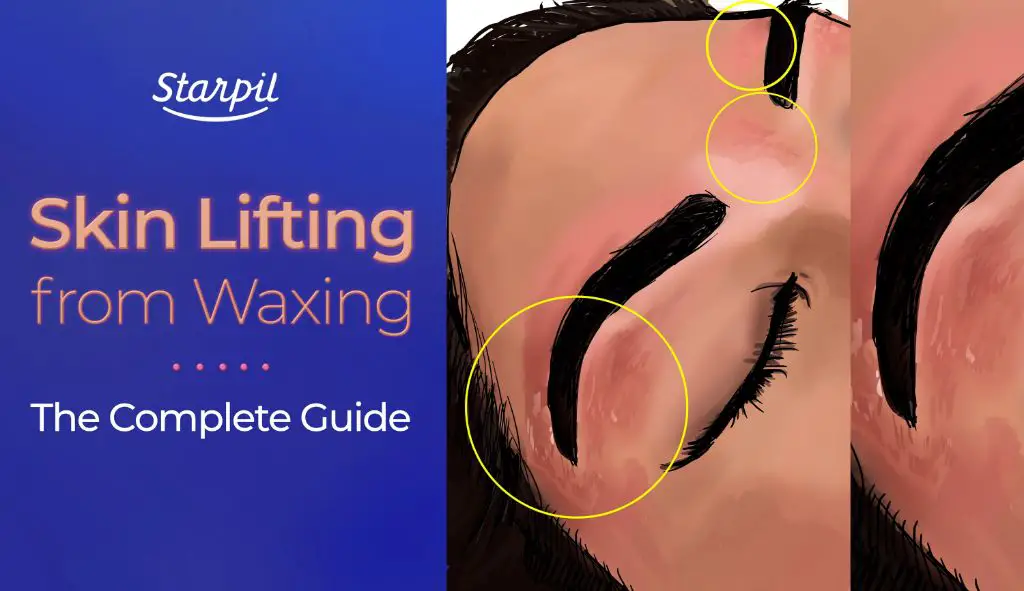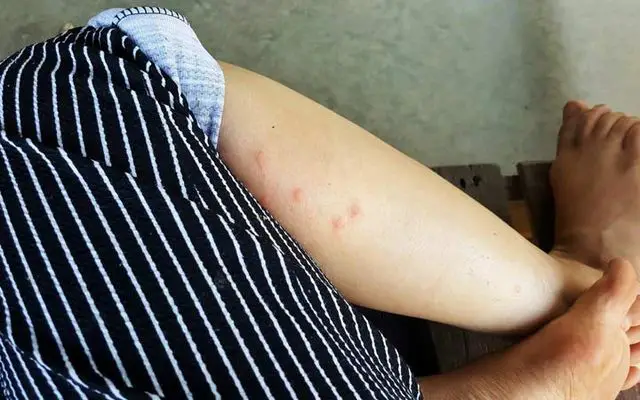Will Wax Burn Leave A Scar?
What is waxing?
Waxing is a method of hair removal that involves applying a sticky wax to the skin and then pulling it off, removing the hair from the follicle. The wax adheres to the hair and pulls it out as it is removed (Source). Waxing can be performed on nearly any area of the body, including the eyebrows, face, bikini area, legs, arms, and feet. The effects of waxing typically last between 3-6 weeks as hair regrows from the follicle. Waxing allows for hair removal that lasts longer compared to shaving. It is commonly performed at salons by licensed estheticians, although waxing kits are available for at-home use.
Some key defining aspects of waxing as a method of hair removal include:
- Application of a warm or hot wax to the desired area
- Adherence of the wax to the hair shaft
- Quick removal of wax against hair growth direction
- Pulling hairs out from the follicle so they regrow with a blunt tip
- Effects lasting 3-6 weeks on average
- Can be performed by professionals or at home
Overall, waxing involves using a wax preparation to remove hair directly from the follicle for smoother, hair-free skin that lasts several weeks.
How waxing works
Waxing is a hair removal technique that involves applying a sticky wax to the skin and then removing the wax and hair by placing a cloth or paper strip over the wax and quickly pulling it off in the opposite direction of the hair growth. This process removes the entire hair from the follicle, leaving skin smooth for several weeks.
There are a few key steps in the waxing process:
- The area is cleaned and a pre-wax product is sometimes applied. This helps the wax grip the hairs better.
- A layer of wax is applied over the area in the direction of hair growth. The wax is often warm to allow for easier application.
- A cloth or paper strip is pressed onto the wax in the direction of hair growth.
- Holding the skin taut, the strip is quickly pulled off in the opposite direction of hair growth, removing all the wax and encapsulated hair.
- The area is cleaned up and an aftercare product may be applied.
This whole process causes minor trauma to the skin’s surface, but removes the complete hair including the root below the skin. The results last several weeks until the trapped hair grows back.
Risks and Side Effects of Waxing
Waxing is generally safe when done properly, but there are some risks and side effects to be aware of. The most common side effects are pain, redness and irritation of the skin (source).
Pain is to be expected during the waxing process as the hair is pulled out from the follicle. The level of pain depends on your individual pain tolerance and the area being waxed. More sensitive areas like the bikini line tend to be more painful (source). The good news is the pain is temporary.
Redness of the skin often occurs after waxing due to irritation of the hair follicles. The skin may look red and inflamed for 24-48 hours after waxing. Proper aftercare helps reduce redness and inflammation. Apply aloe vera gel or hydrocortisone cream to soothe the skin (source).
Skin irritation like bumps, rashes or ingrown hairs can also happen after waxing, especially for those with sensitive skin. Exfoliating before waxing and regularly after can help prevent ingrown hairs. Avoiding tight clothing over waxed areas allows the skin to breathe and prevents irritation (source).
Wax burns

Wax burns occur when the wax is too hot and causes damage to the skin. The main causes of wax burns are:
- Wax that is heated to too high of a temperature. Many experts recommend heating wax to 130-140 degrees Fahrenheit. Going above this range increases the risk of burns (https://www.sknclinics.co.uk/blog/treating-a-wax-burn).
- Allowing wax to remain on the skin for too long. The wax continues heating the skin as it cools, so leaving it on for longer than recommended can lead to burns.
- Using wax that is too thick or hard. Very viscous wax adheres more tightly to skin and can tear at the skin when removed.
- Waxing skin that is damaged, irritated or sunburned. Sensitive skin is more prone to wax burns.
- Reapplying wax to the same area. Repeated waxing passes can overheat the skin.
- Microwaving wax for too long. This can create hot spots that burn skin.
Wax burns are often caused by improper technique and can be avoided with proper training, care and precautions.
Severity of wax burns
Wax burns can range in severity from mild first-degree burns to severe third-degree burns. The severity depends on how deep the wax penetrates and damages the skin. There are three levels of severity:
First-degree burns affect only the outer layer of skin, causing redness, pain, and swelling. The skin is usually not blistered. First-degree wax burns should start healing within a week if properly treated (Treating Wax Burns the Right Way).
Second-degree burns go deeper into the skin, damaging both the outer and inner layers. This causes pain, redness, swelling, and blistering. Second-degree wax burns take longer to heal, usually 2-3 weeks (Waxing Burn: What to Do and How to Treat It).
Third-degree burns fully penetrate the skin, damaging tissues underneath. This causes white/brown scarring and may require skin grafting. Third-degree wax burns take several weeks to months to heal and often leave permanent scarring (Waxing Burn: What to Do and How to Treat It).
Treating wax burns
If you experience a wax burn, it’s important to treat it properly right away to help reduce pain, prevent infection, and minimize scarring. Some home remedies can provide relief for mild wax burns.
Immediately after burning, run the area under cool water for 10-20 minutes to reduce heat in the skin and soothe the burn. You can also apply an ice pack wrapped in a towel to cool the skin for 10 minutes on, 10 minutes off. Using aloe vera gel can help reduce inflammation and promote healing. Over-the-counter pain medication like ibuprofen can ease discomfort.
Keep the burn covered with a sterile bandage and apply an antibiotic ointment like Bacitracin. The ointment helps prevent infection while the bandage protects the sensitive skin. Change the bandage daily while the burn heals. Avoid popping blisters that may form, as this can lead to scarring and infection.
More severe waxing burns may require medical treatment. See your doctor if the burn covers a large area, looks infected, is oozing pus, or is very slow to heal. Signs of infection include increasing pain, swelling, redness, and fevers. Strong prescription antibiotics or silver-containing dressings may be needed for infected burns. Your doctor can provide pain medication and debride dead skin to help the burn heal properly.
To reduce the risk of scarring, keep the burn moisturized as it heals using products containing vitamin E, aloe, or coconut oil. Silicone gels and patches may also minimize scarring over time. Consult your dermatologist about scar treatments like laser therapy, injections, or microneedling if scarring develops.
Sources:
https://www.sknclinics.co.uk/blog/treating-a-wax-burn
https://www.healthline.com/health/beauty-skin-care/waxing-burn
Will a wax burn scar?
Wax burn scarring depends on several factors, including the severity of the burn, how it is treated, and individual skin characteristics. Minor wax burns that only affect the top layer of skin (first-degree burns) are unlikely to scar if properly treated. More severe burns that extend deeper into the skin (second or third-degree burns) carry a higher risk of permanent scarring.
How quickly you act to care for the burn area also impacts scarring potential. Promptly icing the area and applying antibacterial cream helps minimize damage. Avoid picking scabs, which can lead to scarring. Seek medical attention for severe wax burns to prevent extensive scarring.
The location of the wax burn influences scar potential too. Thicker skin areas like legs are less prone to scarring than delicate facial skin. Scar risk also varies by skin type. Those with darker complexions tend to develop thicker scars called keloids more readily than people with fairer skin.
While minor waxing mishaps generally won’t leave lasting marks, severe burns require wound care to optimize healing. Using experienced waxing specialists and estheticians reduces the likelihood of painful burns occurring in the first place.
Preventing wax burns
There are several tips you can follow to help avoid getting a wax burn in the first place:
- Use a technician experienced in waxing – Going to a reputable salon with licensed estheticians reduces the risk of burns since they are trained in proper technique.
- Avoid wax that is too hot – The wax should be tested on the technician’s wrist first to ensure it’s not scalding. Temperatures between 120-130°F are ideal.
- Don’t wax over sunburned or damaged skin – Skin that is already inflamed is more prone to burning.
- Prepare the skin properly – Exfoliating gently and avoiding products with retinoids leading up to waxing helps prevent tearing of the skin which can lead to burns.
- Use proper technique – The wax should be spread in the direction of hair growth and removed opposite of hair growth in a swift motion. Repeated tugging can cause friction burns.
- Use post-wax products – Applying a soothing gel containing ingredients like aloe vera helps prevent irritation and inflammation.
- Take over-the-counter pain medication – NSAIDs like ibuprofen can help reduce inflammation that may lead to burns.
Following these tips and working with an experienced esthetician significantly reduces the chances of getting a painful wax burn.
Seeking compensation
If you suffer severe burns or scarring from a waxing treatment, you may have grounds to pursue legal action. According to lawyers, clients who have received burns from waxing treatments have successfully collected compensation for damages such as medical expenses, hospital bills, lost wages from time off work, and pain and suffering (source).
To have a case, you must prove that the wax technician or salon was negligent. This could be applying wax that was too hot or leaving it on too long. Failing to take proper precautions to avoid burns may also demonstrate negligence. If your injuries are severe enough, you may be entitled to significant compensation.
It’s recommended to consult an attorney who specializes in personal injury or burns. They can review the details of your case and determine if you meet the criteria to pursue legal action. With an attorney’s help, you can calculate damages, file a demand letter, and negotiate a settlement. If necessary, they can represent you in court.
Don’t wait to take legal action. In most states, you have two years from the date of injury to file a lawsuit for compensation. An attorney can advise you on the statute of limitations in your state.
Key takeaways
Waxing is a common hair removal technique that pulls hair out from the root. While generally safe when done properly, waxing does carry risks like irritation, ingrown hairs, and burns. Wax that is too hot can cause painful burns on the skin. Most wax burns are minor and heal without scarring. More severe burns may blister and scar if not treated quickly. To avoid wax burns, go to a licensed professional, ensure proper wax temperature, and speak up if the wax feels too hot. Burns can be treated at home with cool compresses, aloe vera, petroleum jelly, and OTC pain relievers. Seek medical treatment for burns that blister or do not heal. While scarring is possible, most wax burns will heal without permanent marks if cared for properly.



